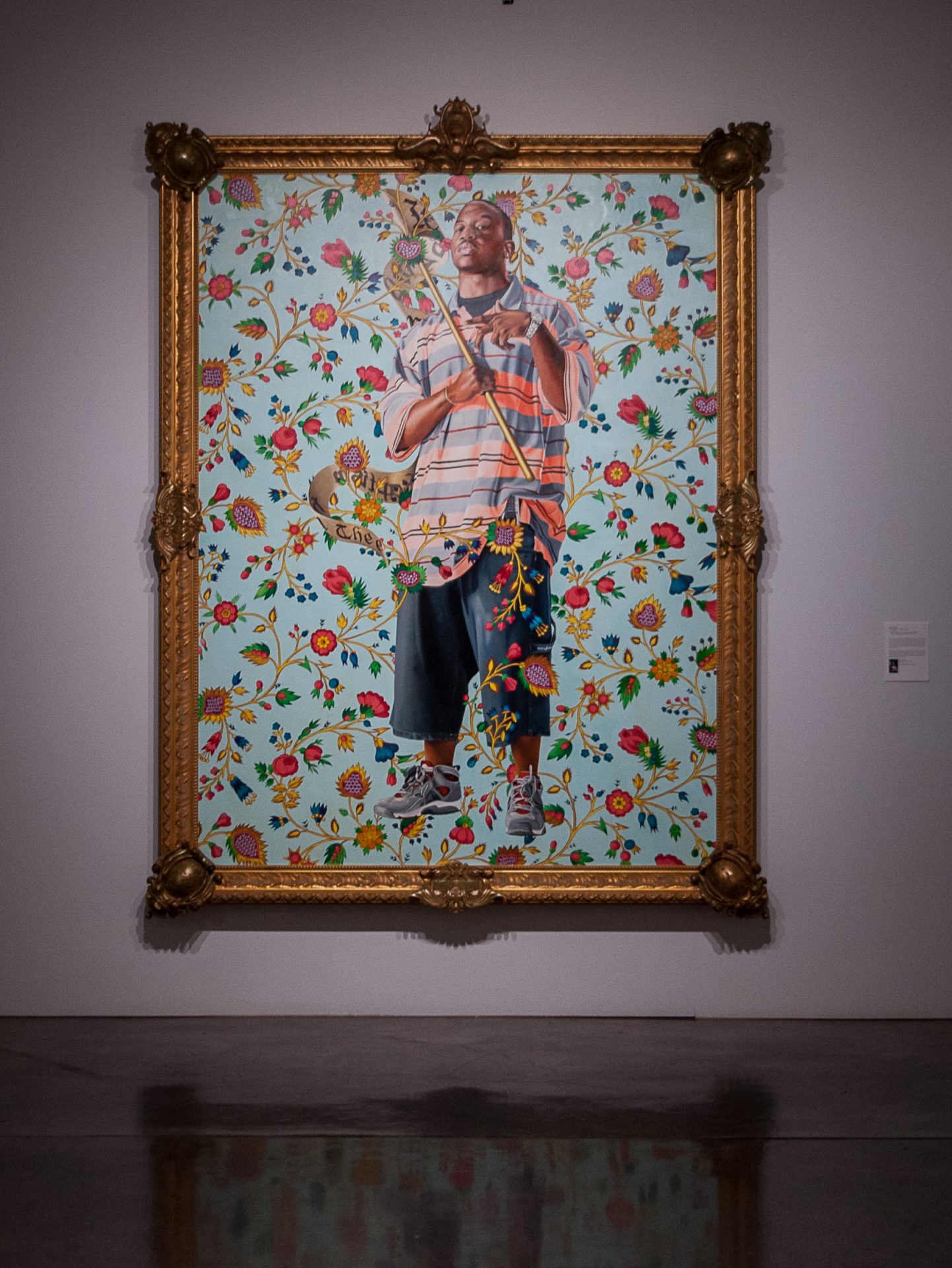
TO WALK INTO THE Hoffman Gallery’s latest exhibit, “Open This End,” is to find oneself at a strange cocktail party, featuring almost exclusively the most significant names in post-modern and contemporary art.
The exhibit, which will be on display through Dec 11, is comprised from the personal collection of Blake Byrne. When visiting a personal collection, it does one well to remember that what is on display does not necessarily tell a cohesive narrative of art history, but rather the sensibilities of a private collector.
As is the case with “Open This End.” There is the requisite Cindy Sherman photograph exploring something to do with the patriarchy, and an Andy Warhol acrylic on canvas print exploring how much money Andy can make with as little effort as possible.
If we choose to stick with this cocktail party metaphor (and being quite fond of it myself I insist that we must), it would not be much of a stretch to say that the major players in modern art all seem to have arrived dressed in decidedly casual wear. Andy Warhol is hitting on undergrads in stained sweatpants and Cindy Sherman is slouching around the snack table in a deteriorating robe.
This is not meant to be a criticism of Byrne himself. It is incredibly hard to get one’s hands on original work by artists with names as large as Warhol, no matter the amount of money on hand. Yet while in a private home it may be astonishing to run into a Warhol on the way to the bathroom, in a gallery setting these pieces do not have the same effect.
Yet it is with care that one must look beyond these larger names, and then truly may some of the more incredible contemporary pieces be found.
If the first room is a meditation on minimalism and art as a commodity, it is the second room of the gallery where one may find a more nuanced collection. It is no surprise that as Byrne has grown as a collector, his collection has reaped the benefits. The second room is laden with thought-provoking and convention-defying pieces from the early to mid-2000s, each of which is worth a visit on its own, and together provide a more cohesive narrative of what the collection aims to be.
Against the back wall, reaching an astounding eight-feet tall, is Kehinde Wiley’s visually entrancing and politically stirring “St. John the Baptist II (Columbus).” To the right of the Wiley is a triptych video piece by Paul Pfieffer, using distorted footage from a basketball game to riff on American sports culture while referencing the late Francis Bacon’s “Three Studies for Figures at the Base of a Crucifixion.”
And amazingly, in the middle of a collection that at first seemed marked by its strict adherence to the rules of the insidious art world, is an enormous tinfoil ball emitting strange noises. One may thank Mike Kelley and his “Silver Ball” for adding a refreshing breath of air to the collection. To peek through the glowing red hole in the “Silver Ball” is to remember that art and art collecting does not need to become a wholly serious enterprise.
At this incredible cocktail party where Cindy Sherman is making small talk with Kehinde Wiley, one may view an important conversation between the old and the new guard of contemporary art as seen through the lens of an avid collector. The Warhols and Shermans from the old guard are still important and relevant for many reasons, but with talent such as Wiley, Pfieffer, and Kelley reimagining what art is and what it should mean to create artistic objects, the conversation is making a tangible shift.
Photos by Blake Ashby
Subscribe to the Mossy Log Newsletter
Stay up to date with the goings-on at Lewis & Clark! Get the top stories or your favorite section delivered to your inbox whenever we release a new issue.



Leave a Reply